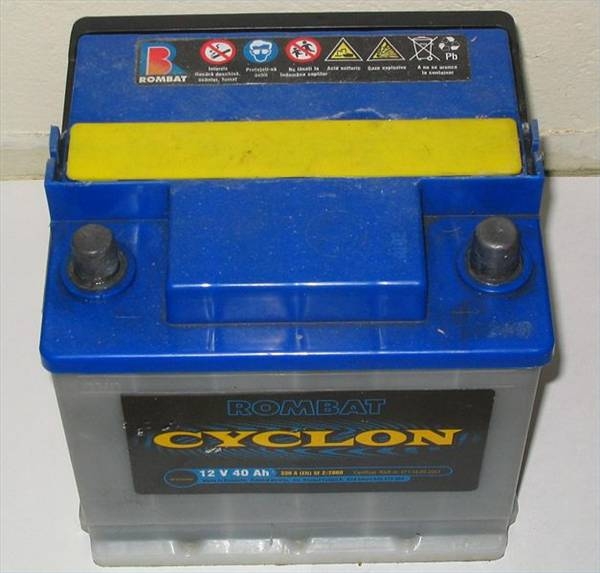
Car batteries provide electricity for running the ignition, lights, starter and a host of other electronic features. They do this by employing a chemical process based on the use of specific materials. The construction of a car battery allows it to be recharged during operation while providing continuous power. The rechargeable batteries in hybrid electric vehicles take this technology to a new level to power the vehicle under certain conditions.
The majority of car batteries are lead-acid batteries. These types of batteries were the first rechargeable batteries produced. They operate on a principle discovered by French engineer Gaston Planté in the 1850s. Car batteries generally have an output of 12 volts.
The battery produces energy through a chemical process involving lead, lead oxide and a liquid electrolyte solution. The electrolytes cause the lead to shed electrons, which are then collected and channeled into a series of conductors, where they provide power for the vehicle's electrical system. When the battery is discharged, lead sulfate (also known as sulfuric acid) forms on the plates. During recharge, the sulfuric acid breaks back into its constituent lead and lead oxide once again.
The electrolyte solution in a car battery is composed of sulfuric acid diluted with water. Levels of sulfuric acid vary, but are generally around 35 percent. Free ions in the solution make the electrolyte conductive and thus able to carry the charge given off by the plates. Some car batteries require maintenance in the form of adding water occasionally. This is because some of the water in the electrolyte solution is lost over time due to electrolysis. Distilled water must be used to properly maintain the chemical balance in the electrolyte solution for maximum conductivity. So-called "Maintenance Free" batteries use a slightly different configuration to prevent the loss of water during electrolysis and require no addition of water. These batteries may still need to be periodically cleaned and tested.
Car batteries typically use a flooded cell construction, in which the lead plates are fully submerged in a liquid electrolyte. In more recent years, absorbent glass mat (AGM) batteries have been introduced. In AGM batteries, the electrolyte is held in a porous mat made of glass fibers. These batteries, though more expensive to produce than traditional flooded call lead-acid batteries, can be designed in a variety of shapes. This makes them more useful for specialty applications. In certain configurations, the plates in an AGM battery can be arranged to discharge more slowly, making a battery that retains more of its own energy and is therefore more efficient in the long term. Slowly AGM batteries are being offered in more consumer automobiles.
Car batteries are a major success story in the history of recycling. When properly disposed of at a recycling facility, almost all of the lead in car batteries can be reused. Additionally, the plastic casing and lead contacts may be recycled as well. This is an important function of lead-acid batteries, since battery waste constitutes such a large portion of landfill volume (and since car batteries have limited lifetimes and must be replaced with some regularity).
Their high lead content makes car batteries valuable as scrap. Additionally, to promote recycling, laws have been passed in certain states that require batteries to be returned for recycling or use a refundable deposit to encourage drivers to turn in their old batteries for a refund.
An entirely different type of car battery is that found in a hybrid electric car. These batteries are recharged (either by the vehicle's motion or when plugged in, as in the case of plug-in hybrids) and power the drive mechanism in certain situations, such as low-rpm cruising. Batteries for these cars are usually made from nickel and cadmium, which take the place of the lead plated in a traditional lead-acid battery. The chemical process is much the same, except that nickel-based batteries have a higher energy density and can therefore provide enough power to drive a vehicle rather than just power its electronic systems. The disadvantages of these batteries are their high cost and the dangerous toxicity of their chemical components.